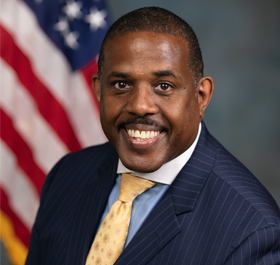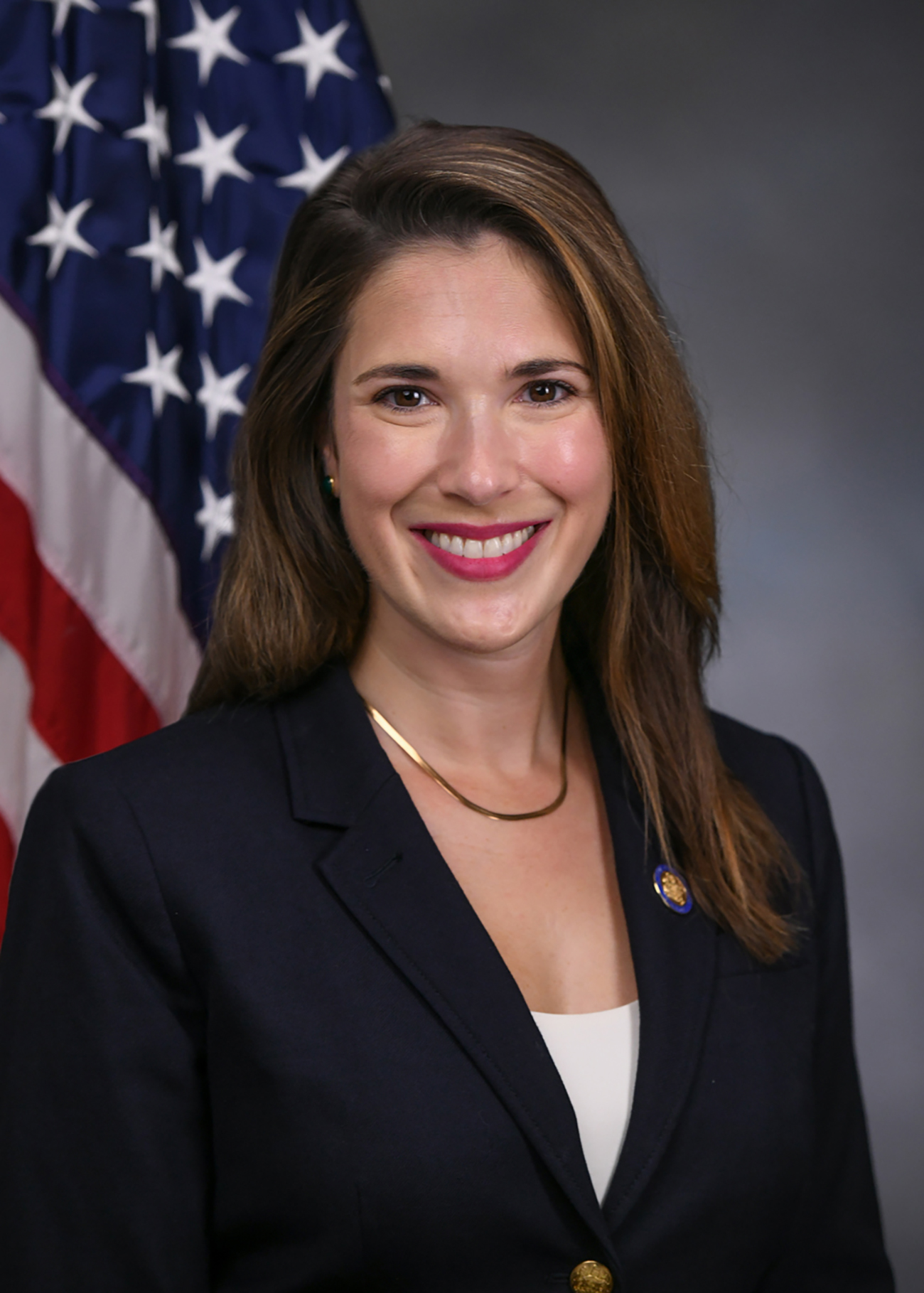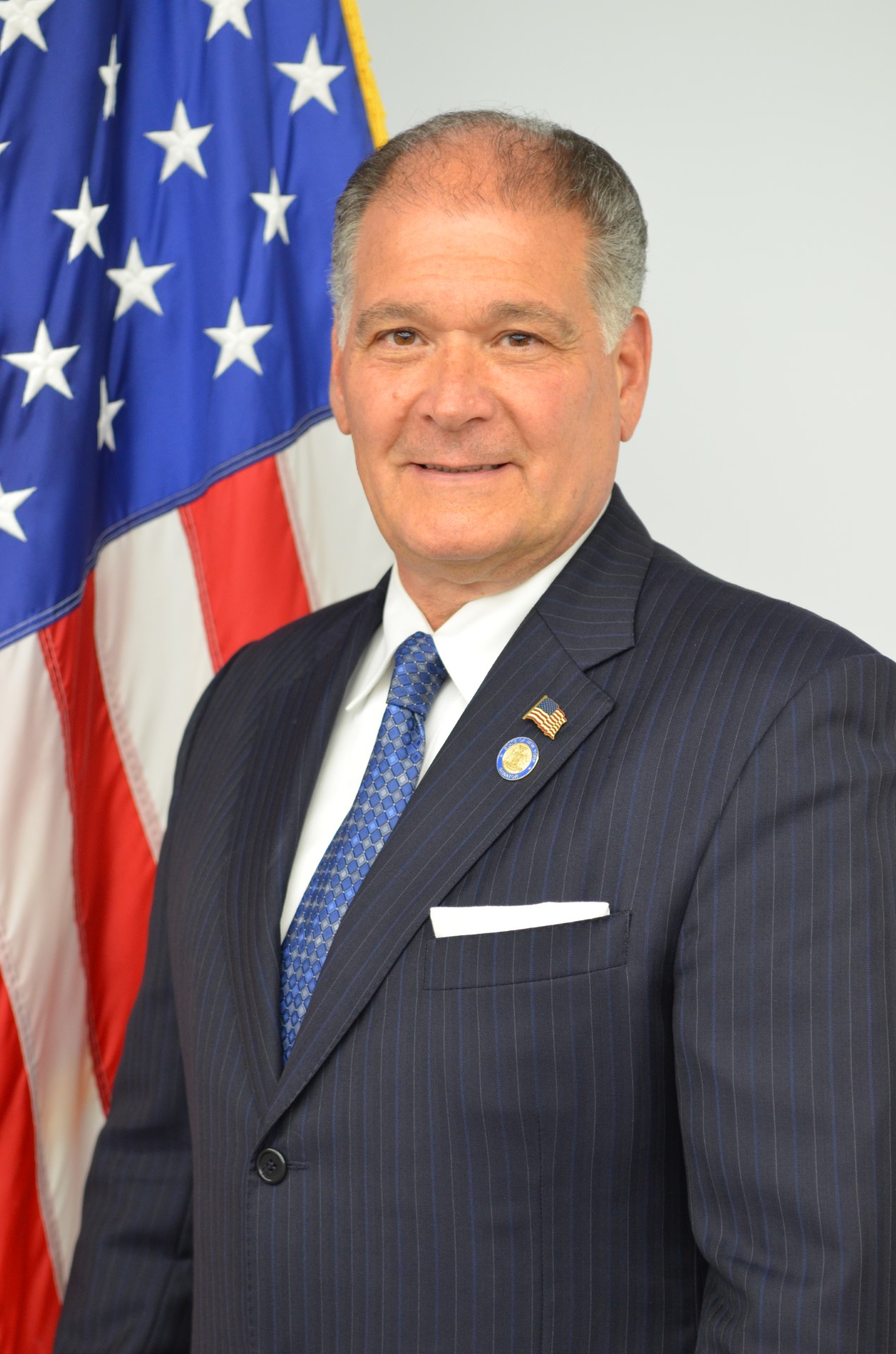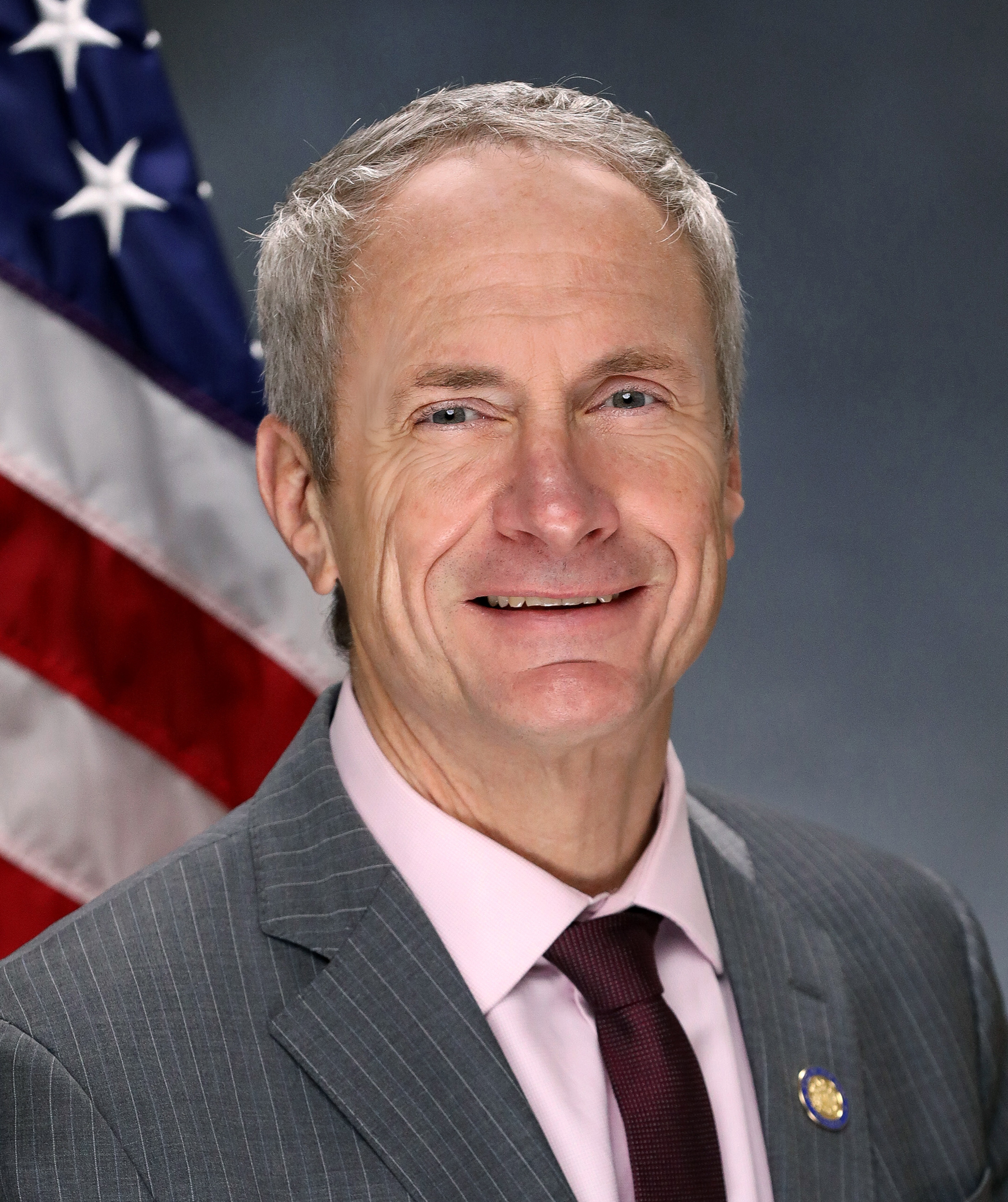S. 9422 2
6. New York State has a strong interest in ensuring an adequate supply
of reliable electrical power and, therefore, needs to promote the devel-
opment of alternative power sources and take steps to assure reliable
deliverability. Thermal energy networks are highly efficient because
they utilize and exchange thermal energy from many underground sources
and buildings, including recycled thermal energy, minimizing impact on
the electricity grid;
7. Access to thermal energy networks has the potential to reduce the
up front and operating costs of building electrification for customers;
8. Utilities' access to capital, their experience with networked
infrastructure in public rights of way, and the requirement that they
serve all customers, positions them well to develop and scale thermal
energy networks that are accessible to all customers and to coordinate
the development of thermal energy networks with any downsizing of the
utility gas system;
9. New York State also has a proprietary interest in the efficient and
reliable delivery of energy and the energy infrastructure of the state,
which interest is acknowledged throughout the public service law. Util-
ity corporations and other power suppliers share these interests and,
moreover, have a duty to protect proprietary interests in the projects
they fund and such investments of ratepayer resources can be protected
by establishing effective contractor qualification and performance stan-
dards, including requirements for prevailing wage rates, bona fide
apprenticeship criteria, and project labor agreements;
10. The construction industry is highly skilled and labor intensive,
and the installation of modern thermal energy networks involves partic-
ularly complex work, and, therefore, effective qualification standards
for craft labor personnel employed on these projects are critically
needed to promote successful project delivery;
11. Finally, the legislature finds that these facts are especially
vital now because the construction industry is experiencing widespread
skill shortages across the country, which are crippling existing capital
projects and threatening projects planned for the future. The
construction of thermal energy networks will utilize many of the same
skills that today's utility and building trades workforces already
possess;
12. Thus, it is the intent of the legislature that passage of this act
is for the following purposes:
a. To remove the legal barriers to utility development of thermal
energy networks and require the public service commission to authorize
and direct utilities to immediately commence piloting thermal energy
networks in each and every utility territory;
b. To direct and authorize the public service commission to develop a
regulatory structure for utility thermal energy networks that scales
affordable and accessible building electrification, protects customers,
and balances the role of incumbent monopoly utilities with other market
and public actors;
c. To promote the successful planning and delivery of thermal energy
networks and protect critical investments in such projects by requiring
the use of appropriate quality craft labor policies that ensure the
development of and access to an adequate supply of well trained, highly
skilled craft persons needed to support timely, reliable, high-quality
projects;
d. To promote strong economic development and good jobs for local
residents in the expanding decarbonized sector by requiring application
of progressive state labor and employment policies that ensure public
S. 9422 3
utility investments and related state subsidies create unparalleled
skill training and employment opportunities for residents in project
areas through the use of local prevailing wage standards and successful,
bona fide apprenticeship programs, or project labor agreements which
incorporate prevailing wage and training standards and provide addi-
tional benefits for project owners and workers; and
e. To promote the use of pre-apprenticeship programs that will fortify
and expand existing apprenticeship programs through systematic outreach
efforts to recruit and assist persons from underrepresented and low-in-
come communities by providing such persons with remedial education,
social services and unique opportunities for direct access into high
quality apprenticeship programs and gainful employment in the growing
building decarbonization workforce.
§ 3. Section 2 of the public service law is amended by adding two new
subdivisions 28 and 29 to read as follows:
28. "THERMAL ENERGY," WHEN USED IN THIS CHAPTER, SHALL MEAN PIPED
NON-COMBUSTIBLE FLUIDS USED FOR TRANSFERRING HEAT INTO AND OUT OF BUILD-
INGS FOR THE PURPOSE OF ELIMINATING ANY RESULTANT ON-SITE GREENHOUSE GAS
EMISSIONS OF ALL TYPES OF HEATING AND COOLING PROCESSES, INCLUDING, BUT
NOT LIMITED TO, COMFORT HEATING AND COOLING, DOMESTIC HOT WATER, AND
REFRIGERATION.
29. "THERMAL ENERGY NETWORK," WHEN USED IN THIS CHAPTER, SHALL MEAN
ALL REAL ESTATE, FIXTURES AND PERSONAL PROPERTY OPERATED, OWNED, USED OR
TO BE USED FOR OR IN CONNECTION WITH OR TO FACILITATE A UTILITY-SCALE
DISTRIBUTION INFRASTRUCTURE PROJECT THAT SUPPLIES THERMAL ENERGY.
§ 4. Subdivision 11 of section 2 of the public service law, as amended
by chapter 159 of the laws of 1992, is amended to read as follows:
11. The term "gas corporation," when used in this chapter, includes
every corporation, company, association, joint-stock association, part-
nership and person, their lessees, trustees or receivers appointed by
any court whatsoever, owning, operating or managing any gas plant OR
THERMAL ENERGY NETWORK (a) except where gas is made or produced and
distributed by the maker on or through private property solely for its
own use or the use of its tenants and not for sale to others, (b) except
where compressed natural gas is sold, distributed or furnished solely as
a fuel for use in motor vehicles, (c) except where manufactured gas is
sold by the producer only for use or resale by a gas corporation and
such gas of the producer and any affiliated producers does not exceed in
any one year thirty per cent of the total gas sold by any purchaser
thereof in the area in which such manufactured gas is resold either as
manufactured gas or as a component of mixed gas, and (d) except where
gas is made or produced solely from one or more alternate energy
production facilities or distributed solely from one or more of such
facilities to users located at or near a project site; provided, howev-
er, that any producer not included within the meaning of "gas corpo-
ration" by reason of exception (c) or (d) shall nevertheless be consid-
ered a gas corporation for the purposes of commission jurisdiction
relating to the safety of the construction, operation, or maintenance of
plants manufacturing pipeline quality gas.
§ 5. Subdivision 13 of section 2 of the public service law, as amended
by chapter 843 of the laws of 1981, is amended to read as follows:
13. The term "electric corporation," when used in this chapter,
includes every corporation, company, association, joint-stock associ-
ation, partnership and person, their lessees, trustees or receivers
appointed by any court whatsoever (other than a railroad or street rail-
road corporation generating electricity solely for railroad or street
S. 9422 4
railroad purposes or for the use of its tenants and not for sale to
others) owning, operating or managing any electric plant OR THERMAL
ENERGY NETWORK except where electricity OR THERMAL ENERGY is generated
or distributed by the producer solely on or through private property for
railroad or street railroad purposes or for its own use or the use of
its tenants and not for sale to others; or except where electricity is
generated by the producer solely from one or more co-generation, small
hydro or alternate energy production facilities or distributed solely
from one or more of such facilities to users located at or near a
project site.
§ 6. Subdivision 1 of section 5 of the public service law is amended
by adding a new paragraph i to read as follows:
I. TO THERMAL ENERGY PROVIDED BY GAS CORPORATIONS, ELECTRIC CORPO-
RATIONS, OR COMBINATION GAS AND ELECTRIC CORPORATIONS.
§ 7. Paragraphs (c) and (d) of subdivision 6 of section 65 of the
public service law, paragraph (c) as amended by chapter 204 of the laws
of 2010 and paragraph (d) as amended by chapter 388 of the laws of 2011,
are amended and a new paragraph (e) is added to read as follows:
(c) for a remote meter reading device upon the request and consent of
the customer; [or]
(d) for installation of capital improvements and fixtures to promote
energy efficiency upon the request and consent of the customer, includ-
ing but not limited to the performance of qualified energy efficiency
services for customers participating in green jobs-green New York
on-bill recovery pursuant to section sixty-six-m of this article[.]; OR
(E) FOR THE PROVISION OF THERMAL ENERGY SERVICE.
§ 8. Section 10 of the transportation corporations law is amended to
read as follows:
§ 10. Definitions. A gas corporation is a corporation organized to
manufacture, to produce or otherwise acquire and to supply for public
use artificial or natural gas [or], a mixture of both ARTIFICIAL AND
NATURAL gases OR THERMAL ENERGY for light, heat or power and for light-
ing the streets and public and private buildings of cities, villages and
towns in this state. An electric corporation is a corporation organized
to manufacture, to produce or otherwise acquire, and to supply for
public use electricity OR THERMAL ENERGY for light, heat or power, and
for lighting streets, avenues, public parks and places and public and
private buildings of cities, villages and towns within this state. A gas
and electric corporation is a corporation organized for purposes of both
a gas corporation and an electric corporation. FOR PURPOSES OF THIS
ARTICLE, "THERMAL ENERGY" SHALL HAVE THE SAME MEANING AS DEFINED BY
SUBDIVISION TWENTY-EIGHT OF SECTION TWO OF THE PUBLIC SERVICE LAW.
§ 9. Subdivisions 1, 2, 3 and the opening paragraph of subdivision 3-b
of section 11 of the transportation corporations law, subdivision 3 as
amended by chapter 622 of the laws of 1947 and the opening paragraph of
subdivision 3-b as amended by chapter 840 of the laws of 1977, are
amended to read as follows:
1. A gas corporation and a gas and electric corporation shall have
power to manufacture gas, and to acquire THERMAL ENERGY OR natural or
artificial gas and to mix the gases and to sell and furnish THERMAL
ENERGY FOR HEATING OR COOLING OR gas for light, heat or power; and to
lay conductors, PIPES, CONDUITS, DUCTS AND OTHER FIXTURES for gas OR
THERMAL ENERGY NETWORKS in the streets, highways and public places, in
each city, village and town in the county or counties named in its
certificate of incorporation, with the consent of the municipal authori-
S. 9422 5
ties of such city, village or town, and under such reasonable regu-
lations as they may prescribe.
2. Every corporation having authority under any general or special law
or under any charter or franchise, to lay down, erect or maintain pipes,
conduits, ducts or other fixtures in, over or under the streets, high-
ways and public places of any municipality for the purpose of furnishing
or distributing natural gas OR THERMAL ENERGY, may acquire and supply
for public use artificial gas OR THERMAL ENERGY.
Where any gas corporation is serving natural gas under permits or
franchises permitting the laying or maintaining of mains or pipes and
conveying natural gas, and the supply of natural gas has become inade-
quate or insufficient to give reasonable service to consumers in the
municipalities served by it, such gas corporation may supply artificial
gas or a mixture of natural and artificial gases OR THERMAL ENERGY under
such permits or franchises.
3. An electric corporation and a gas and electric corporation shall
have power to generate, acquire and supply electricity OR THERMAL ENERGY
for heat, COOLING or power in cities, towns and villages within this
state, and to light the streets, highways and public places thereof, and
the public and private buildings therein; and to make, sell or lease all
machines, instruments, apparatus and other equipments therefor, and for
transmitting and distributing electricity OR THERMAL ENERGY, to lay,
erect and construct suitable wires or other conductors, with the neces-
sary poles, pipes, THERMAL ENERGY NETWORKS or other fixtures in, on,
over and under the streets, avenues, public parks and places in such
cities, towns or villages, with the consent of the municipal authorities
thereof, and in such manner and under such reasonable regulations, as
they may prescribe.
The construction, use and maintenance by an electric corporation of
transmission, distribution and service lines and wires OR THERMAL ENERGY
NETWORKS in, over or under any street, highway or public place and the
construction, use and maintenance by a gas corporation of transmission,
distribution and service pipes, conduits, ducts or other fixtures in,
over or under any trees, highway or public place, as may be necessary
for its corporate purposes, are hereby declared to be public uses and
purposes.
§ 10. Subdivision 1 of section 224-d of the labor law, as added by
section 2 of part AA of chapter 56 of the laws of 2021, is amended and a
new subdivision 8 is added to read as follows:
1. For purposes of this section, a "covered renewable energy system"
means (A) a renewable energy system, as such term is defined in section
sixty-six-p of the public service law, with a capacity of greater than
five megawatts alternating current and which involves the procurement of
renewable energy credits by a public entity, or a third party acting on
behalf and for the benefit of a public entity; OR (B) ANY "THERMAL ENER-
GY NETWORK" AS DEFINED BY SUBDIVISION TWENTY-NINE OF SECTION TWO OF THE
PUBLIC SERVICE LAW.
8. ANY THERMAL ENERGY NETWORK COVERED BY THIS SECTION SHALL REQUIRE
ALL CONTRACTORS AND SUBCONTRACTORS PERFORMING CONSTRUCTION WORK TO USE
APPRENTICESHIP AGREEMENTS, AS DEFINED BY ARTICLE TWENTY-THREE OF THIS
CHAPTER, WITH PRE-APPRENTICESHIP DIRECT ENTRY PROVIDERS REGISTERED WITH
THE DEPARTMENT.
§ 11. The public service law is amended by adding a new section 66-t
to read as follows:
§ 66-T. THERMAL ENERGY NETWORK DEVELOPMENT. 1. THE PUBLIC SERVICE
COMMISSION SHALL INITIATE A PROCEEDING WITHIN THREE MONTHS OF THE EFFEC-
S. 9422 6
TIVE DATE OF THIS SECTION TO SUPPORT THE DEVELOPMENT OF THERMAL ENERGY
NETWORKS FOR THE PURPOSE OF MEETING THE GREENHOUSE GAS EMISSIONS AND
EQUITY GOALS OF THE CLIMATE LEADERSHIP AND COMMUNITY PROTECTION ACT.
THE MATTERS THE COMMISSION SHALL CONSIDER IN SUCH PROCEEDING SHALL
INCLUDE, BUT SHALL NOT BE LIMITED TO, THE APPROPRIATE OWNERSHIP, MARKET,
AND RATE STRUCTURES FOR THERMAL ENERGY NETWORKS AND WHETHER THE
PROVISION OF THERMAL ENERGY SERVICES BY GAS AND/OR ELECTRIC UTILITIES IS
IN THE PUBLIC INTEREST. THE COMMISSION SHALL PROMULGATE RULES AND REGU-
LATIONS WITHIN TWO YEARS TO: (A) CREATE FAIR MARKET ACCESS RULES FOR
UTILITY-OWNED THERMAL ENERGY NETWORKS TO ACCEPT THERMAL ENERGY THAT
ALIGNS WITH THE CLIMATE JUSTICE AND GREENHOUSE GAS EMISSIONS REDUCTIONS
REQUIREMENTS OF THE CLIMATE LEADERSHIP AND COMMUNITY PROTECTION ACT AND
THAT DOES NOT INCREASE GREENHOUSE GAS EMISSIONS OR CO-POLLUTANTS; (B)
EXEMPT SMALL-SCALE THERMAL ENERGY NETWORKS NOT OWNED BY UTILITIES FROM
COMMISSION REGULATION; (C) PROMOTE THE TRAINING AND TRANSITION OF UTILI-
TY WORKERS IMPACTED BY THIS ACT; AND (D) ENCOURAGE THIRD PARTY PARTIC-
IPATION AND COMPETITION WHERE IT WILL MAXIMIZE BENEFITS TO CUSTOMERS.
2. WITHIN THREE MONTHS OF THE EFFECTIVE DATE OF THIS SECTION, EACH OF
THE SEVEN LARGEST GAS, ELECTRIC, OR COMBINATION GAS AND ELECTRIC CORPO-
RATIONS SHALL SUBMIT TO THE COMMISSION FOR REVIEW AND APPROVAL AT LEAST
ONE AND AS MANY AS FIVE PROPOSED PILOT THERMAL ENERGY NETWORK PROJECTS.
IN DEVELOPING THE PILOT PROJECT PROPOSALS, AT LEAST ONE PILOT PROJECT IN
EACH UTILITY TERRITORY SHALL BE PROPOSED IN A DISADVANTAGED COMMUNITY AS
DEFINED IN SUBDIVISION FIVE OF SECTION 75-0101 OF THE ENVIRONMENTAL
CONSERVATION LAW, AND IF A UTILITY PROPOSES FOUR OR MORE PILOT PROJECTS,
AT LEAST TWO SHALL BE PROPOSED IN DISADVANTAGED COMMUNITIES. EACH UTILI-
TY SHALL COORDINATE WITH OTHER UTILITY PARTICIPANTS, THE NEW YORK STATE
ENERGY RESEARCH AND DEVELOPMENT AUTHORITY, AND CONSULTANTS WITH EXPER-
TISE ON SUCCESSFUL PILOT PROJECTS TO ENSURE THAT THE PILOT PROJECTS ARE
DIVERSE AND DESIGNED TO INFORM THE COMMISSION'S DECISIONS IN THE
PROCEEDING ON THE VARIOUS OWNERSHIP, MARKET, AND RATE STRUCTURES FOR
THERMAL ENERGY NETWORKS. THE PILOT PROJECT PROPOSALS SHALL INCLUDE
SPECIFIC CUSTOMER PROTECTION PLANS AND SHALL BE MADE PUBLICLY AVAILABLE
ON THE COMMISSION'S WEBSITE AND SHALL BE SUBJECT TO A PUBLIC COMMENT
PERIOD OF NO LESS THAN THIRTY DAYS. WITHIN SIX MONTHS OF THE EFFECTIVE
DATE OF THIS SECTION, THE COMMISSION SHALL DETERMINE WHETHER IT IS IN
THE PUBLIC INTEREST TO APPROVE OR MODIFY SUCH PILOT THERMAL ENERGY
NETWORK PROJECTS AND SHALL ISSUE AN ORDER DIRECTING EACH GAS, ELECTRIC
OR COMBINATION GAS AND ELECTRIC CORPORATION TO IMPLEMENT SUCH PROPOSED
OR MODIFIED PILOT THERMAL ENERGY NETWORK PROJECTS. IN CONSIDERING WHETH-
ER PILOT THERMAL ENERGY NETWORK PROJECTS ARE IN THE PUBLIC INTEREST, THE
COMMISSION SHALL CONSIDER WHETHER THE PILOT PROJECT WILL DEVELOP INFOR-
MATION USEFUL FOR THE COMMISSION'S PROMULGATION OF REGULATIONS GOVERNING
THERMAL ENERGY NETWORKS, WHETHER THE PILOT PROJECT FURTHERS THE CLIMATE
JUSTICE AND/OR EMISSIONS REDUCTION MANDATES OF THE CLIMATE LEADERSHIP
AND COMMUNITY PROTECTION ACT, WHETHER THE PILOT PROJECT ADVANCES FINAN-
CIAL AND TECHNICAL APPROACHES TO EQUITABLE AND AFFORDABLE BUILDING ELEC-
TRIFICATION, AND WHETHER THE PILOT PROJECT CREATES BENEFITS TO CUSTOMERS
AND SOCIETY AT LARGE, INCLUDING BUT NOT LIMITED TO PUBLIC HEALTH BENE-
FITS IN AREAS WITH DISPROPORTIONATE ENVIRONMENTAL OR PUBLIC HEALTH
BURDENS, JOB RETENTION/CREATION, RELIABILITY, AND INCREASED AFFORDABILI-
TY OF RENEWABLE THERMAL ENERGY OPTIONS.
3. EACH GAS, ELECTRIC, OR COMBINATION GAS AND UTILITY CORPORATION
SHALL REPORT TO THE COMMISSION, ON A QUARTERLY BASIS, AND UNTIL
COMPLETION OF THE PILOT THERMAL ENERGY NETWORK PROJECT AS DETERMINED BY
THE COMMISSION, THE STATUS OF EACH PILOT THERMAL ENERGY NETWORK PROJECT.
S. 9422 7
THE COMMISSION SHALL POST AND MAKE PUBLICLY AVAILABLE SUCH REPORTS ON
ITS WEBSITE. THE REPORT SHALL INCLUDE, BUT NOT BE LIMITED TO, THE: (A)
STAGE OF DEVELOPMENT OF EACH PILOT PROJECT; (B) BARRIERS TO DEVELOPMENT;
(C) NUMBER OF CUSTOMERS SERVED; (D) COSTS OF THE PILOT PROJECT; (E)
NUMBER OF JOBS RETAINED OR CREATED BY THE PILOT PROJECT; AND (F) ANY
OTHER SUCH INFORMATION THE COMMISSION DEEMS TO BE IN THE PUBLIC INTER-
EST.
4. ANY THERMAL ENERGY NETWORK CREATED UNDER THIS SECTION SHALL DEMON-
STRATE THAT THE GAS OR ELECTRIC CORPORATION HAS ENTERED INTO A LABOR
PEACE AGREEMENT WITH A BONA FIDE LABOR ORGANIZATION OF JURISDICTION THAT
IS ACTIVELY ENGAGED IN REPRESENTING GAS AND ELECTRIC CORPORATION EMPLOY-
EES. THE LABOR PEACE AGREEMENT SHALL APPLY TO THE EMPLOYEES NECESSARY
FOR THE MAINTENANCE AND OPERATION OF SUCH THERMAL ENERGY NETWORK. THE
LABOR PEACE AGREEMENT SHALL BE AN ONGOING MATERIAL CONDITION OF AUTHORI-
ZATION TO MAINTAIN AND OPERATE SUCH THERMAL ENERGY NETWORKS. THE EMPLOY-
EES ELIGIBLE FOR THESE POSITIONS SHALL FIRST BE SELECTED FROM AND
OFFERED TO A POOL OF TRANSITIONING UTILITY WORKERS WHO HAVE LOST, OR ARE
AT RISK OF LOSING, THEIR EMPLOYMENT WITH A UTILITY DOWNSIZING ITS GAS
TRANSMISSION AND DISTRIBUTION SYSTEM. SUCH LIST OF POTENTIAL EMPLOYEES
SHALL BE PROVIDED BY AFFECTED UNIONS AND PROVIDED TO THE DEPARTMENT OF
LABOR. THE DEPARTMENT OF LABOR SHALL UPDATE AND PROVIDE SUCH LIST TO
THE GAS OR ELECTRIC CORPORATION NINETY DAYS PRIOR TO PURCHASE, ACQUISI-
TION, AND/OR CONSTRUCTION OF ANY THERMAL ENERGY NETWORK CREATED UNDER
THIS SECTION.
§ 12. The public authorities law is amended by adding a new section
1020-ll to read as follows:
§ 1020-LL. PILOT THERMAL ENERGY NETWORK PROJECTS. WITHIN THREE MONTHS
OF THE EFFECTIVE DATE OF THIS SECTION, THE AUTHORITY AND ITS SERVICE
PROVIDER SHALL SUBMIT FOR REVIEW TO THE DEPARTMENT OF PUBLIC SERVICE AT
LEAST ONE AND AS MANY AS FIVE PROPOSED PILOT THERMAL ENERGY NETWORK
PROJECTS AS DEFINED IN SUBDIVISION TWENTY-NINE OF SECTION TWO OF THE
PUBLIC SERVICE LAW. WITHIN SIX MONTHS OF THE EFFECTIVE DATE OF THIS
SECTION, AND UPON RECOMMENDATION BY THE DEPARTMENT OF PUBLIC SERVICE,
THE AUTHORITY SHALL DETERMINE WHETHER IT IS IN THE PUBLIC INTEREST TO
APPROVE OR MODIFY SUCH PILOT THERMAL ENERGY NETWORK PROJECTS AND SHALL
DIRECT THE SERVICE PROVIDER TO IMPLEMENT SUCH PROPOSED OR MODIFIED PILOT
THERMAL ENERGY NETWORK PROJECTS. THE AUTHORITY SHALL PROMULGATE RULES
AND REGULATIONS CONSISTENT WITH THE STANDARDS SET FORTH IN SUBDIVISIONS
TWO AND THREE OF SECTION SIXTY-SIX-T OF THE PUBLIC SERVICE LAW.
§ 13. This act shall take effect immediately.





